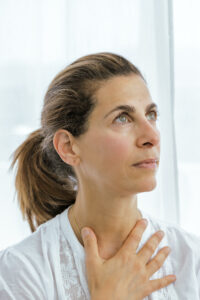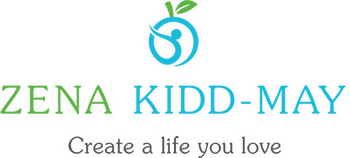Why I trained to teach face yoga?
Over the years of teaching yoga (more than 25 years now!), I gradually started to incorporate some kind of face relaxation techniques and stagnant energy shifting for the face, head, ears, neck and eyes. It intuitively made complete sense to me, to also work the 57 muscles of the face/neck and my students loved it … the feedback was “We want more!”.
I noticed when I was regularly doing these simple face yoga techniques, it gave me a connection and awareness of where I was holding tension, my dull headaches and eye strain disappeared and my skin look vibrant again!
Two and a half years ago when I researched the techniques, and looked into the training, I was astounded by the huge benefits and why it was super important I train and introduce face yoga to my students.
Eighteen months on and fully qualified, I set up a face yoga clinic – the study of facial movements. I have termly group Zoom classes for all levels and an 8 week in-line beginners programme that is suitable for everyone. I will launch the advance course in the coming months.
 You may want to watch a 6 minute video of me explaining the full benefits of face yoga, whilst I am doing some of the techniques Click to see the recording
You may want to watch a 6 minute video of me explaining the full benefits of face yoga, whilst I am doing some of the techniques Click to see the recording
Who is my face yoga course for?
A 30-minute, twice weekly Zoom class, that will work on the upper & lower portions of the face. We do lots of repetition to allow students to really become familiar with the techniques, so they are empowered to fit them in on a daily basis. I encourage students to take a photo of their face at the beginning of the course, this is a great way to see positive changes at the end of our 10 or 20 sessions together.
The benefits of doing my face yoga programme & what we will work on
1. Lifted muscles
2. Removing facial tension … everyone’s favourite!
3. Less eye strain
4. Relaxed jaws
5. Become familiar with your facial strain and stress points
6. Better circulation and oxygenation
7. Calmer mind
8. Overall feeling of wellbeing
9. Better sitting posture – I talk through the importance of sitting tall, so a good chair and cushion is helpful
10. Better breathing – always reminding you to pause and breathe slowly and deeply
11. Plumper skin
Do I need to use a moisturiser and if so, which one?
Yes, using a good quality organic oil is really important for face Yoga exercises. The oil will help with the glide on some of the movement and it will stop the fingers dragging at the skin, especially on areas of the skin that are sensitive and thin, like around the eyes and neck. Also, these oils don’t get absorbed into the skin straight away, which is what normal facial moisturises tend to do.
The products I recommend are raw organic coconut oil and Fushi almond oil. These are easily purchased from any good health store. What we put on our skin is very important because our skin is our biggest organ and everything gets absorbed into the body and blood circulation.
Can I do face yoga everyday and how long will it take for me to see results? 
Face yoga has so many benefits (as you can read above). However, one must do a little everyday or every other day to get the full benefits. I would suggest do a little everyday, either in the morning or evening before bed. If you can manage to do it 4/5 days per week you will see and feel a vast difference. Even if you only manage to fit in 5-minutes on these days, it will make a difference to your overall wellbeing, this will become part of your daily self-care routine.
Results from face yoga will vary from person to person. There are many factors that play a part in how quickly you will see results, like overall stress levels, diet, lifestyle and age. The most important advice is to try to do a little everyday for best and quickest results.
With daily practice, you will begin to see and feel a notable difference within 10 days. Most students see some changes within a month.
Face Yoga tips
1. Wash your hands before starting to stop the spread of bacteria
2. Have a full glass of water for drinking during the session to hydrate your skin
3. Remove all make-up and apply a small amount of oil (not too much otherwise the fingers will be too slippy)
4. If it feels comfortable for you, remove your glasses or contact lenses
5. Use a mirror to see you are not tensing your facial muscles while doing the exercises
6. Keep checking in with your breath that you are breathing deeply and slowly
7. Good standing or sitting posture is important for your breath and wellbeing
There is so much more I can say about face yoga … book into one of my Zoom sessions or purchase a beginners bundle from my shop and feel the full benefits for yourself!









